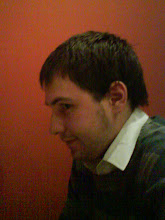I tell this story simply to illustrate how deeply affecting a strong friendship can be. And that dice are fun to play with.

Title/Focus: Roll Of The Dice
So my focus will be on DICE and the many wondrous variety's of dice that exist. what exactly i don't know, but there are a few ideas i have floating around in my noggin. A lot of dice play involves statistics and numbers, and so any form solution based on these needs to be not just facts and figures but a way of interpreting those in a visually interesting and stimulating way. Whether there would be a way of doing so in a dice-related form i will have to look into. Also i have been thinking about the form of dice, its size, shape and especially material, and how i could manipulate that to give a different perception of what dice are. So maybe using felt or cloth or thin paper in some way. Linked in with that is those make-it-yourself dice kits, with the six sides and tabs for glueing. So maybe integrating the new materials and that method. It would look especially good, i think, due to the fact i have dice of many different shapes and colours, from 4 sided to 20 sided.
Research Information
Hmmm tricky one, simply because there's two very different avenues i could take, and which could be more effective, or more importantly, how could i marry the two. So far i have 100 rolls of 100 dice, so all statistics based, and have collected 100 differently coloured/shaped and size dice also. Photography could play a big part too, there is a lot i could do such as photographing the dice from each side etc, in orders (colour, size, number of sides, size, weight even). i really like the visual ideas and the disection on forms and doing something more off the beaten path, so some fabric work (sewing etc) to see how things might fit together as well.
Methods & Processes
I think i covered most of this already (this is becoming a bit of a mish-mash of ideas ha all under the wrong titles) but only because it applies to both categories. So essentially recording methods such as photography, maybe drawing, and statistical recording, then processing that information on photoshop or illustrator in the form of graphs, charts etc, but also to go the other way and hand craft interpretations of that data such as sewing and crafting which i'll also use to study the more visual aspects of size, colour etc.
I think I'm comfortable enough on the software programs and with a camera to do what i need to, and i've done craft making projects in the past so that should be fairly easy. Bookbinding i'm not so hot on so we'll see if i can look into books and ways of binding a bit more which might affect how i actually end up resolving the brief.
Evaluation
Evaluation will be continuous. The usual processes should suffice, though most often its best to get outsiders opinions on work to get an unbiased view so group crits and even just general conversation with others in the class will help a great deal. I think the visual evaluation will be quite obvious as it progresses.

No comments:
Post a Comment